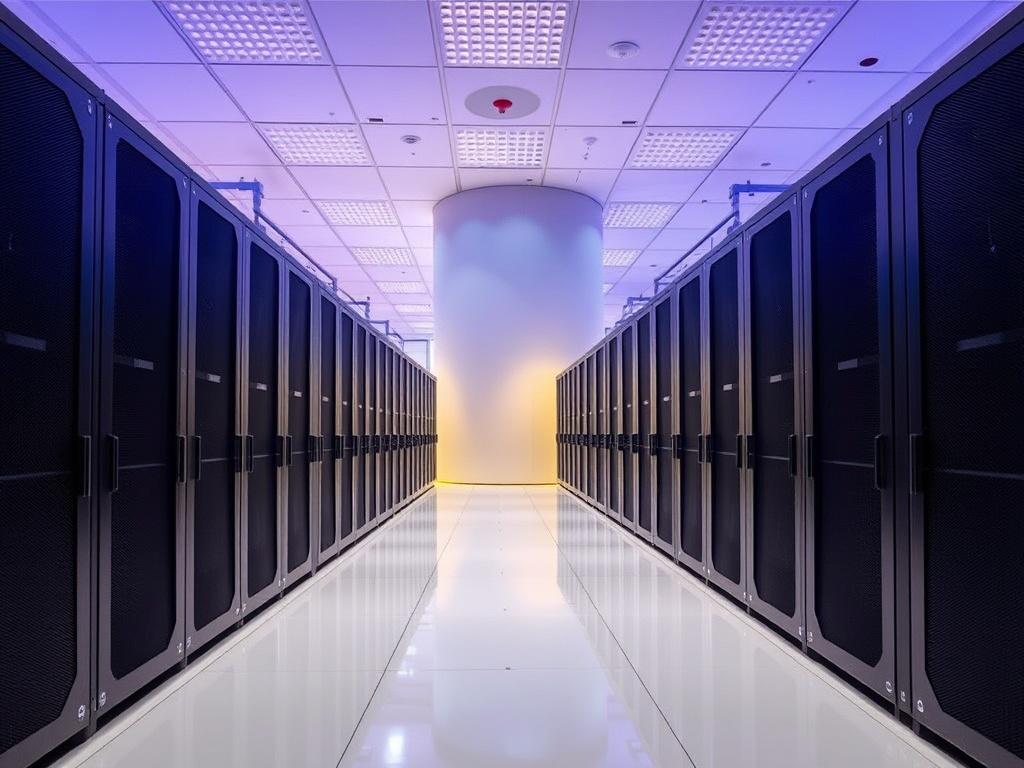- Why Microsoft is Investing in Nuclear-Powered Data Centers
- The Promise of Small Modular Reactors (SMRs)
- The Technical and Environmental Benefits
- How Microsoft Plans to Integrate Nuclear Energy
- Challenges Facing Nuclear-Powered Data Centers
- Regulatory and Legal Barriers
- Public Perception and Acceptance
- Cost and Infrastructure Requirements
- Global Implications of Microsoft’s Initiative
- Industry and Government Collaboration
- Summary of Key Stakeholders
- The Future Outlook: What’s Next for Nuclear-Powered Data Centers?
- Conclusion
In recent years, the demand for data processing and cloud services has skyrocketed, owing to the rapid advancement of technology and the expanding digital world. Microsoft, one of the biggest players in the tech industry, has been at the forefront of innovation not only in software but also in how data centers consume energy. One of the most groundbreaking developments is Microsoft’s nuclear-powered data centers. This bold initiative aims to combine clean, sustainable energy with high-performance computing, tackling two major global challenges: climate change and digital infrastructure growth.
While most people think of renewable energy sources like solar or wind when it comes to green tech, Microsoft’s interest in nuclear energy for powering data centers reflects a forward-thinking approach. Nuclear energy is traditionally associated with large-scale power plants, but new advancements in small modular reactors (SMRs) are making it possible to integrate nuclear power on a smaller, more flexible scale. Microsoft’s nuclear-powered data centers promise to be a game-changer in achieving carbon neutrality, maintaining data reliability, and pushing the tech industry towards more responsible energy consumption.
Why Microsoft is Investing in Nuclear-Powered Data Centers

The energy demands of data centers are enormous and growing. These facilities run around the clock, powering everything from social media to business applications and artificial intelligence. While cloud services deliver convenience and innovation, they also consume a staggering amount of electricity, often sourced from fossil fuels. This electricity consumption accounts for significant carbon emissions, posing a considerable environmental challenge.
Microsoft’s commitment to becoming carbon negative by 2030 highlights the importance of finding clean and reliable energy solutions. Renewable sources like solar and wind have limitations, including intermittency and land use constraints. This is where nuclear power gains an edge. Nuclear energy offers a consistent and high-density power output without carbon emissions, making it an attractive option for Microsoft’s sustainability goals.
The company has actively explored integrating advanced nuclear reactors close to or even within their data centers, creating a new paradigm in energy infrastructure. The potential benefits include not only reducing carbon footprint but also increasing energy security and operational efficiency.
The Promise of Small Modular Reactors (SMRs)
At the heart of Microsoft’s nuclear-powered data centers are small modular reactors (SMRs). Unlike traditional nuclear plants that are massive and require extensive infrastructure, SMRs are compact, factory-built reactors that can be transported and installed with relative ease. This technology is still emerging but holds immense promise.
SMRs generate clean energy safely and efficiently. Their smaller size allows them to be placed onsite at data centers or in nearby locations, drastically cutting down transmission losses and increasing energy efficiency. Furthermore, SMRs are designed with enhanced safety features, such as passive cooling systems, which reduce the risk of accidents and make them easier to manage than older reactors.
Microsoft sees SMRs not just as a source of power but as a strategic asset that can make its data centers more resilient. The company is actively collaborating with startups and nuclear technology experts to accelerate the adoption of SMR technology for commercial use.
The Technical and Environmental Benefits

Microsoft’s move toward nuclear-powered data centers goes well beyond novelty. The environmental benefits alone justify serious investment. Nuclear energy produces zero direct carbon emissions, helping drastically reduce the overall environmental impact of operating massive data centers.
To put it into perspective, here’s a simple comparison of energy sources used in data centers in terms of carbon output and reliability:
| Energy Source | Carbon Emissions (kg CO2 per MWh) | Reliability | Typical Challenges |
|---|---|---|---|
| Coal | 900 — 1050 | High | High emissions, finite resources |
| Natural Gas | 400 — 500 | High | Greenhouse gases, price volatility |
| Solar | 20 — 50 | Variable | Intermittency, land use |
| Wind | 10 — 20 | Variable | Intermittency, noise |
| Nuclear (SMRs) | ~0 | Very High | Regulatory hurdles, public perception |
As you can see, nuclear power presents a nearly zero carbon emission option while offering unmatched reliability. This reliability is critical for data centers because downtime can lead to costly disruptions and data loss. With nuclear-powered data centers, Microsoft can ensure consistent power availability without interruption, meeting customer expectations and regulatory requirements with ease.
Additionally, nuclear energy’s high energy density means less land area is required compared to sprawling solar farms or wind turbines. This makes it especially valuable in urban or space-limited environments.
How Microsoft Plans to Integrate Nuclear Energy
Microsoft’s strategy involves building partnerships with nuclear technology firms and innovators. Rather than developing reactors from scratch, Microsoft focuses on deploying proven SMR designs tailored to data centers’ unique requirements. These reactors will be designed to integrate closely with the data center’s infrastructure, enabling custom power management and emergency resilience.
Microsoft is also investing in advanced software that optimizes energy use and monitors reactor operations in real-time. This digital layer is critical, as it allows the company to maximize efficiency while maintaining the highest safety standards. The company’s goal is to create a «plug-and-play» nuclear energy solution, making it easier to replicate across multiple data centers worldwide.
Moreover, combining nuclear power with other renewable sources creates a hybrid system that maximizes energy stability and sustainability. For example, solar panels can be deployed during daytime peaks, while nuclear reactors continuously supply baseline power. This integrated approach promises to reduce overall energy costs, improve sustainability metrics, and enhance operational flexibility.
Challenges Facing Nuclear-Powered Data Centers
Despite the many advantages, there are challenges that Microsoft must overcome to make nuclear-powered data centers a widespread reality. Technical, regulatory, and public perception issues all play a role.
Regulatory and Legal Barriers
Nuclear energy is one of the most heavily regulated sectors globally, with strict safety and environmental standards. Deploying SMRs requires thorough licensing and compliance with numerous laws, which can delay projects. Navigating this complex regulatory landscape demands significant resources and collaboration with governments.
Public Perception and Acceptance
Nuclear power has historically faced skepticism and opposition from communities due to accidents such as Chernobyl and Fukushima. Microsoft must engage in public education and transparency to build trust around nuclear-powered data centers. Emphasizing safety innovations and environmental benefits will be critical.
Cost and Infrastructure Requirements
While SMRs are expected to be more cost-effective than traditional nuclear reactors in the long run, the upfront investment remains high. Building and installing these systems next to or inside data centers require redesigning existing infrastructure and training specialized personnel.
- High initial capital expenditure for reactor development and installation
- Need for skilled nuclear engineers and operators
- Potential zoning and land-use issues near urban data centers
Global Implications of Microsoft’s Initiative
Microsoft’s foray into nuclear-powered data centers could set a precedent for the entire tech industry. By proving that data centers can run on clean nuclear energy, Microsoft not only advances its sustainability agenda but also encourages competitors and other sectors to rethink energy consumption.
This shift has potential benefits far beyond data centers. The success of SMRs in this context could accelerate the adoption of modular nuclear energy in other fields such as manufacturing, transportation hubs, and remote communities. The impact on global carbon emissions reduction could be massive if scaled widely.
Furthermore, Microsoft’s initiative aligns with global efforts to combat climate change, such as the Paris Agreement goals. Tech companies are increasingly held accountable for their environmental footprint, and this project exemplifies a proactive approach to corporate responsibility.
Industry and Government Collaboration
An essential aspect of making nuclear-powered data centers mainstream is collaboration between private tech companies, nuclear technology firms, regulators, and governments. Microsoft’s leadership role invites partnerships that foster innovation and create streamlined regulatory frameworks.
Several countries have expressed interest in modernizing their nuclear policies to accommodate SMRs, and tech-driven projects like Microsoft’s add momentum. This cooperation is necessary to ensure safety, encourage investment, and accelerate deployment timelines.
Summary of Key Stakeholders
| Stakeholder | Role | Interest |
|---|---|---|
| Microsoft | Investor and implementer | Reduce carbon footprint, ensure energy security |
| SMR Developers | Technology providers | Commercialize SMRs, innovation |
| Government Regulators | Regulatory and safety oversight | Public safety, environmental protection |
| Local Communities | Hosts and neighbors | Safety, jobs, environmental quality |
| Environmental Groups | Watchdog and advocacy | Support clean energy, monitor safety |
The Future Outlook: What’s Next for Nuclear-Powered Data Centers?

As the world demands more data and greener energy, Microsoft’s nuclear-powered data centers could become a defining feature of the next generation of cloud infrastructure. The coming years will likely witness pilot projects, increased regulatory clarity, and advancements in SMR technology.
Microsoft is expected to continue its investments and expand partnerships to scale the use of nuclear energy in its operations. The data center landscape will evolve, balancing efficiency, sustainability, and security through innovative energy solutions.
Other tech giants may follow suit, sparking a broader movement toward clean and reliable power for digital infrastructure. The confluence of cloud computing and next-generation nuclear technology presents a promising frontier that balances the digital age’s insatiable energy needs with environmental responsibility.
Conclusion
Microsoft’s vision of nuclear-powered data centers represents a pioneering step toward sustainable, reliable, and energy-efficient computing. By leveraging small modular reactors, Microsoft is tackling the pressing challenges of carbon emissions, energy security, and operational reliability head-on. While the journey involves navigating regulatory, technical, and social hurdles, the potential rewards are immense—not just for Microsoft but for the entire tech ecosystem and the planet. This initiative signals a future where data centers can be powerful engines of innovation fueled by clean, sustainable nuclear energy, paving the way for a greener digital world.
Как вам статья?







